Instilling a strategic messaging platform for communication is a common and essential practice in business. It allows organizations to frame their core values, purpose, vision, and mission to the annual goals and objectives in a carefully crafted set of messages. Then, those messages flow to advance the mission, unite the workforce, and drive action through carefully constructed strategic communications planning.
Leadership too must have their own set of strategic messaging that aligns to and underscores the organization-level messaging. This sets the tone and focus for ongoing interactions with key audiences and can help build trust and engagement with teams and employees.
Yet all too often, leaders fail to build out a robust, prepared message platform and instead rely on winging it when their moment comes. Maybe they do okay, but they typically forget vital information or fall short on the emotional connection through critical stories, facts, or associations. Having a prepared set of repeatable messages perfected and ready to go is far more powerful.
The value of aligning our own goals, plans, and messages to the organization level is it connects us to the business vision and keeps our actions and efforts on the right path. In addition, it ensures we consistently verbalize key ideas to those who work with us, and it then gets cascaded down more effectively.
A strong leadership messaging platform should include:
- A collection of ideas, metaphors, stories, talking points, data, key examples, etc.
- A unified theme that engages audiences emotionally and intellectually.
- And a compelling and relevant point tailored to each audience.
So, how do you get there? How do you create a strategic messaging platform that is compelling, easily understood, and inspires action? It’s not easy, and it may take trial and error to get it right. But, it requires dedication and commitment to the practice and preparation and fine-tuning to engage and galvanize during a crisis, transformation, and massive change.
Building the meaningful message platform
1. Align to the organization’s messaging
Start by examining the organization-level messaging to fully understand what it says about who the business is, what unique value it provides, where it’s going, and how it will get there. There should be core themes that highlight this value and distinguishes the business from competitors.
Knowing that messaging inside and out clarifies how you as a leader can support that focus through your strengths, current role, and the area of the business you lead. Based on that information, define what your goals and objectives are for the short and long term.
2. Define a vision and purpose that resonates
As you look at the business you lead and the priorities for the year, is there a clear vision for where you are taking the company? Is that vision aspirational yet still reachable where it will incite enthusiasm amongst employees? Can employees identify with the vision and purpose? Does it create a sense of community, or is it too financially driven? Vision and purpose should stimulate an emotional connection that is easily championed and is relatable.
Whatever vision you create should seamlessly align with what the enterprise level defines as the larger vision.
3. Craft messaging for different audiences

Be careful not to assume a one-and-done message approach will resonate with every audience. What is meaningful to middle-management may not be to younger employees. Or how you convey the vision to the finance team likely won’t go over the same for the marketing organization.
Prepare targeted messages, relevant stories, and pertinent data that match your audience. Otherwise, it’s a wasted opportunity and a lost following.
4. Connect the dots for employees
When leadership speaks to employees, sometimes the message is far too high for the average person to clearly understand how it impacts the job. Instead, they want to understand what it means for what they do every day. So along with targeting the message for the audience, sometimes you must lay out more specifics that show what it means for the different roles and responsibilities in the room.
If the goal is to grow the business 10 percent in the next year and you’re presenting to an audience of IT folks, help them understand that you are counting on them to find ways the business can leverage technology to their advantage. Ask them to show where processes and workflow can be better streamlined using the systems in place. Give them a goal of integrating platforms so the business can scale with greater ease. Help them understand how valuable they are to the end goal.
5. Create a cache of stories

When executives stand in front of employees and drone on about company priorities and goals and then hammer teams with a flood of action items and deadlines, it’s easy for people to miss why things are important or what the focus was about in the first place. A better way to make a point and ensure everyone can understand what’s shared is through storytelling.
Stories are hands down the best way to share information, engage an audience, and ensure people will remember what you said. Stories help make complex information relatable and straightforward. They can bring humor and levity to a tense situation or emotional connection when it’s vital they galvanize for the greater good.
As you craft your messages and think about experiences you’ve had or others have shared, capture those stories in writing, spell them out, and seek elements where you can enhance the narrative for a more powerful punch. The more stories, the better. And if you can’t think of one of your own, borrow someone else’s.
6. Get the facts
Sometimes when you’re trying to drive change or compel people to take drastic steps for a larger goal, they still might not be bought into what you’re selling. Just because you say something doesn’t make it accurate. Back it up with data. Collect facts and metrics to prove your point. Be prepared to counter any hesitation by sharing that data or reinforce success with metrics and measurements captured.
Talk to the rest of the business to gather the facts and proof points you need. Perhaps the sales team can pull analytics from their sales dashboards or information they’ve gathered from clients utilizing your products and services. Human resources may have end-of-month talent acquisition metrics or can pull numbers from employee surveys. Collect it, keep it updated, and know when and how you’ll use it.
7. Build the platform

As you craft the vision, collect stories and data, and consider the unique audiences you communicate with, pull it all together with a few more key elements to create your messaging platform. For example, consider including a short elevator speech that articulates your main messages and can serve as an opener to collaboration, sponsorship, or other synergies.
All of it can pull together into one framework where easily applied at any point in time. And if one component needs updating, you can view it strategically and make amendments to the whole as the messaging evolves. So, keep it close and use it everywhere.
8. Practice, practice, practice!
And finally, before you hit the road with your new message platform, be sure you are prepared and confident in your delivery. As silly as it may feel, practice it in front of a mirror, to a smaller audience of peers, or a trusted mentor or advisor.
Ask them how it came across to them. Did it make sense, did it engage that person to action, or did it incite the right emotion? Again, this messaging should seem natural to deliver and easy to make applicable to whatever situation and audience you encounter.
Do you have a meaningful messaging platform to galvanize your employees?
Other Resources:
Communication, Messaging Platform, Storytelling, Strategic Messaging
